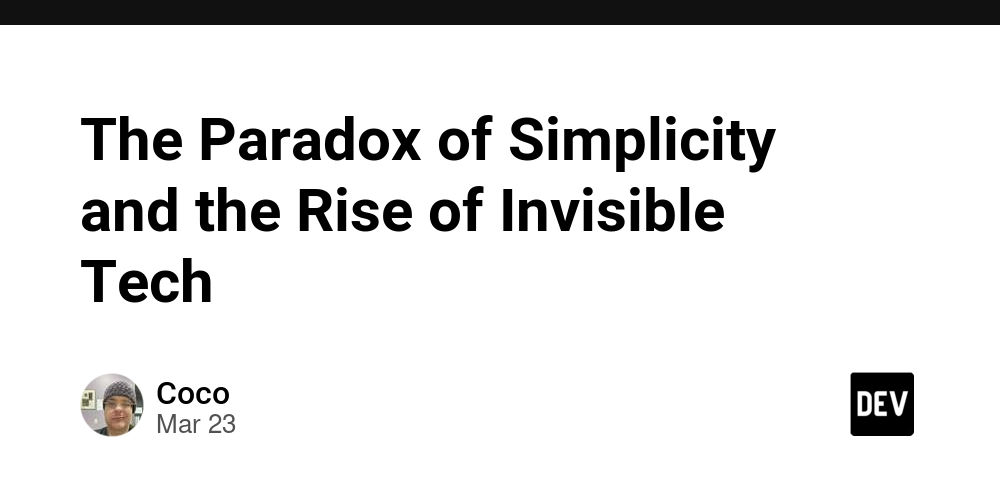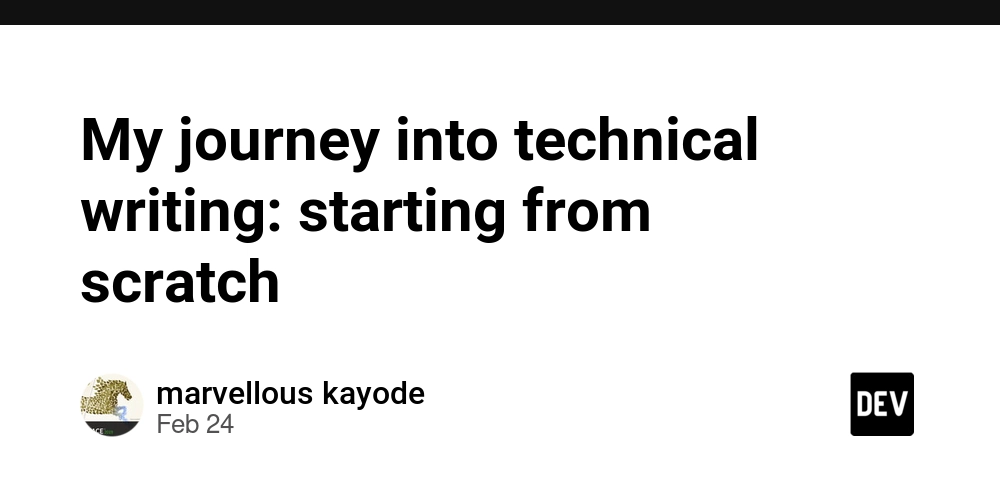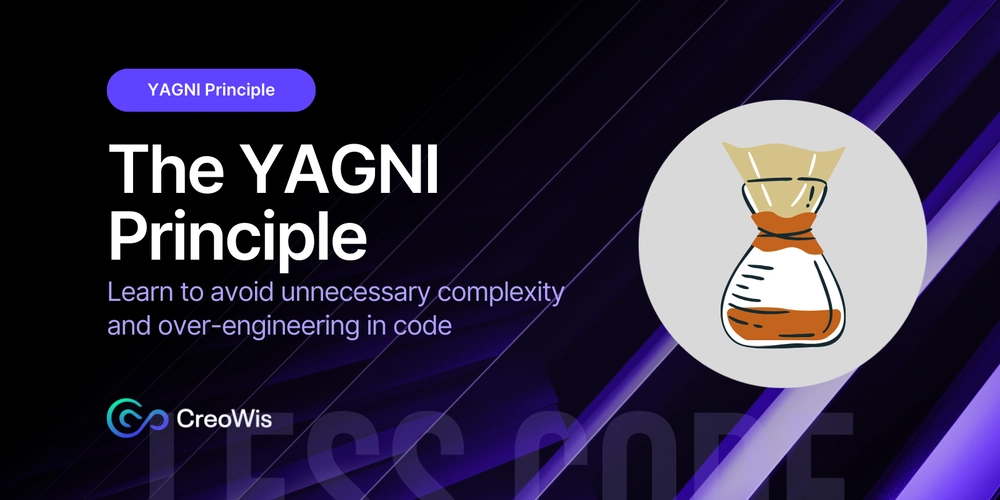The Paradox of Simplicity and the Rise of Invisible Tech
Modern technology is supposed to make our lives easier, but sometimes it feels like it is actually making things inaccessible to those who need it most. Sometimes it hides the simple pleasures of life and distracts us from them. Modern tools demand a level of technical fluency that only engineers and enthusiasts will comfortably navigate, leaving the rest of the world to either struggle or opt out entirely. But true innovation isn’t about adding complexity — it’s about making complexity invisible. Take ChatGPT as a positive example. On the surface, it’s just a text box. You type words in, and it responds. But behind that simple interface is an absurd amount of machinery—vast networks of servers, AI models layered on top of each other, content filtering, and more. It’s hyper-complex, yet completely accessible. This is part of why it has taken the world by storm. Anyone, regardless of their technical background, can verbally ask for a pie recipe and instantly get one, without needing to understand a single thing about LLMs or cloud computing or why a nuclear power plant needs to spin up to power OpenAI’s energy needs (see footnote 1). This is invisible tech—where complexity exists, but it never burdens the user. And this is where technology should be heading. Serving the Revolution to Low-Tech Users Right now, technology is designed by engineers, for technophiles. Even when companies claim to focus on “user experience,” they’re usually just smoothing out the edges of already complex systems rather than rethinking how those systems could serve people with minimal technical literacy. There is now a ton of opportunity to serve those people. Take my grandma, for instance. She doesn’t care about AWS Lambda, API Gateways, or microservices. She doesn’t need to know what Spotify is. What she cares about is getting the right information or response when she needs it. She would love to just ask her phone to deliver her a pizza and pay for it. She does not want to know about Domino’s new iOS pizza app, because that would require knowing what an app is. In a way, I have to learn about tech and serverless solutions to enable her not to have to. I don’t want her to have to! Yet most tech solutions assume a level of digital fluency she—and millions of others—don’t have. If technology truly served people rather than just serving engineers’ impulse to tinker, we would see low-tech, low-barrier, high-impact interfaces—tools that feel as effortless as talking to another person. The best interfaces would be: High fidelity – No clutter, no unnecessary features, just the essential functions Low complexity – No complex setup, no steep learning curves Low knowledge barrier – No manuals, no prerequisite skills needed High utility – Actually useful in real-world, everyday situations The Role of AWS and Serverless in Invisible Tech The beauty of serverless computing is that it allows us to build high-powered applications with lightweight, accessible interfaces. AWS already provides many of the building blocks to create seamless, invisible tech experiences: Amazon Lex & Polly – AI-driven voice interaction that can make services available through simple phone calls AWS Lambda – Event-driven, scalable backend logic without infrastructure concerns Amazon Connect – Cloud-based call centers that could act as automated helpers for people who struggle with traditional apps API Gateway & Step Functions – A way to chain together complex logic without forcing the user to navigate it With these tools, we could build systems that let people interact with powerful tech using only voice commands, phone calls, or simple text input—no apps, no accounts, no friction. Invisible Tech Improvements for Underserved Communities Drawing from my recent experiences training as an EMT, I’ve encountered various individuals—particularly older adults, people battling substance use disorders, those managing pain, and those suffering from chronic conditions. Many of these individuals have minimal familiarity with complex technologies, yet their need for accessible, intuitive tech is deep. Imagine how invisible tech could make an impact in underserved communities: 1. Accessibility-First Interfaces for Low-Sight Users In my local community, I’ve come across multiple individuals with sight accessibility issues. While I, as an engineer, can navigate complex user interfaces with multiple buttons, sliders, and options, these individuals struggle significantly with these designs. The tech world has made strides with voice-controlled tools like Amazon Alexa and Google Assistant, but there is room for improvement. Empowering tool: Imagine a purpose-built interface specifically designed for individuals with low or no sight. This could involve voice-activated and haptic feedback systems that guide the user through an app’s functions without requiring any visual interaction. By leveraging AWS Lex for voice recognition, we co

Modern technology is supposed to make our lives easier, but sometimes it feels like it is actually making things inaccessible to those who need it most. Sometimes it hides the simple pleasures of life and distracts us from them. Modern tools demand a level of technical fluency that only engineers and enthusiasts will comfortably navigate, leaving the rest of the world to either struggle or opt out entirely.
But true innovation isn’t about adding complexity — it’s about making complexity invisible.
Take ChatGPT as a positive example. On the surface, it’s just a text box. You type words in, and it responds. But behind that simple interface is an absurd amount of machinery—vast networks of servers, AI models layered on top of each other, content filtering, and more. It’s hyper-complex, yet completely accessible. This is part of why it has taken the world by storm. Anyone, regardless of their technical background, can verbally ask for a pie recipe and instantly get one, without needing to understand a single thing about LLMs or cloud computing or why a nuclear power plant needs to spin up to power OpenAI’s energy needs (see footnote 1).
This is invisible tech—where complexity exists, but it never burdens the user. And this is where technology should be heading.
Serving the Revolution to Low-Tech Users
Right now, technology is designed by engineers, for technophiles. Even when companies claim to focus on “user experience,” they’re usually just smoothing out the edges of already complex systems rather than rethinking how those systems could serve people with minimal technical literacy. There is now a ton of opportunity to serve those people.
Take my grandma, for instance. She doesn’t care about AWS Lambda, API Gateways, or microservices. She doesn’t need to know what Spotify is. What she cares about is getting the right information or response when she needs it. She would love to just ask her phone to deliver her a pizza and pay for it. She does not want to know about Domino’s new iOS pizza app, because that would require knowing what an app is.
In a way, I have to learn about tech and serverless solutions to enable her not to have to. I don’t want her to have to! Yet most tech solutions assume a level of digital fluency she—and millions of others—don’t have.
If technology truly served people rather than just serving engineers’ impulse to tinker, we would see low-tech, low-barrier, high-impact interfaces—tools that feel as effortless as talking to another person. The best interfaces would be:
- High fidelity – No clutter, no unnecessary features, just the essential functions
- Low complexity – No complex setup, no steep learning curves
- Low knowledge barrier – No manuals, no prerequisite skills needed
- High utility – Actually useful in real-world, everyday situations
The Role of AWS and Serverless in Invisible Tech
The beauty of serverless computing is that it allows us to build high-powered applications with lightweight, accessible interfaces. AWS already provides many of the building blocks to create seamless, invisible tech experiences:
- Amazon Lex & Polly – AI-driven voice interaction that can make services available through simple phone calls
- AWS Lambda – Event-driven, scalable backend logic without infrastructure concerns
- Amazon Connect – Cloud-based call centers that could act as automated helpers for people who struggle with traditional apps
- API Gateway & Step Functions – A way to chain together complex logic without forcing the user to navigate it
With these tools, we could build systems that let people interact with powerful tech using only voice commands, phone calls, or simple text input—no apps, no accounts, no friction.
Invisible Tech Improvements for Underserved Communities
Drawing from my recent experiences training as an EMT, I’ve encountered various individuals—particularly older adults, people battling substance use disorders, those managing pain, and those suffering from chronic conditions. Many of these individuals have minimal familiarity with complex technologies, yet their need for accessible, intuitive tech is deep.
Imagine how invisible tech could make an impact in underserved communities:
- 1. Accessibility-First Interfaces for Low-Sight Users
In my local community, I’ve come across multiple individuals with sight accessibility issues. While I, as an engineer, can navigate complex user interfaces with multiple buttons, sliders, and options, these individuals struggle significantly with these designs. The tech world has made strides with voice-controlled tools like Amazon Alexa and Google Assistant, but there is room for improvement.
Empowering tool: Imagine a purpose-built interface specifically designed for individuals with low or no sight. This could involve voice-activated and haptic feedback systems that guide the user through an app’s functions without requiring any visual interaction. By leveraging AWS Lex for voice recognition, we could offer an interface where individuals can escalate issues, get notifications, and access essential services through simple voice commands or touch-based gestures.
- 2. Algorithmic Content Customization for Accessibility
Applications like TikTok, Spotify, and others use an algorithmic approach to generate content tailored to an individual’s interests. While this approach works well for people with full accessibility, it also holds potential for those with sight impairments. The algorithm doesn’t rely on the user interacting with a traditional interface, but rather on their interests and preferences over time, making it easier for users to engage without having to see every option.
Empowerment tool: For individuals with sight limitations, an algorithm-based content stream could be designed to serve them better. For example, an app that curates their own calendar and task list over time to generate streams of upcoming events and todo items combined to give them a verbal/audio map of the possible day ahead for based on their calendar, their task list, and also algorithmically adjusting to their preferences over time and individualized specifically to what is happening with them. I am considering solutions in the AWS space, and here AWS Personalize is an engineering and serverless way to turn thin user behavior provided data via a recommendation engine into individualized recommendations.
- 3. Emergency and Health Monitoring via Voice
In the context of healthcare, particularly in emergency medical situations, individual are often may be struggling with pain, confusion, or chronic conditions. We often get calls from life-alert necklaces in my area that patients never even knew they had triggered because the texh is mute. The need for tech that can respond to a voice command, especially when the person is in distress, becomes crucial.
Empowerment tool: A voice-activated system designed for individuals with health concerns could integrate with wearables and sensors to allow users to request help, check vitals, or even get emergency instructions without needing to touch anything. This could be paired with AWS Lambda and API Gateway to provide real-time feedback and monitoring through an easily understandable voice interface. Imagine an elderly person at home experiencing chest pain: they could simply ask, “What should I do if my chest hurts?” and the system would respond with step-by-step questions, as well as alerting emergency services.
- 4. Simple Communication Tools for Substance Recovery Patients
Many individuals in substance recovery face significant barriers when it comes to accessing complex healthcare technology. Even the traditional concept of “rehab “requires a huge amount of effort and energy to go to a “rehab clinic “. What if we could bring rehab to the people who needed it, wherever they walked, wherever they drove, wherever they were? In situations where they may be struggling with their health or mental state, they need simple, intuitive tools to help them stay connected with their support systems.
Empowerment tool: A low-barrier communication platform, like a voice-activated chatbot or a very simplified text interface, could allow these individuals to easily check in with healthcare providers, support groups, or have scheduled check-ins with family members. This system could use AWS Polly for natural language processing and allow users to send messages or receive advice without dealing with complicated forms or settings. It could be as simple as saying, “I need to talk to my sponsor,” or even just “I need to talk to SOMEONE” and the system would connect them to the right person for that time and place.
Fragments of these tools are starting to exist in the world, but they remain locked behind some very substantial technical and societal barriers. Often one of the most substantial barriers is that they are being built by technophile engineers, for digitally fluent users. The challenge may not just be in building the technology, but in making the technology disappear.
Building for Outcomes, Not Just Implementation
As engineers, it’s easy to get obsessed with the underlying machinery—optimizing APIs, tweaking performance, debating monoliths vs. microservices. But none of that matters if the end result isn’t usable by real people.
The real question isn’t how something is built—it’s who it’s built for. The best technology serves people without them ever needing to think about it.
Invisible tech isn’t just a design goal. It’s a necessary shift if we want technology to truly serve humanity—not just the engineers building it and the younger generations being immersed in it.
Footnotes
Footnote 1: Yes, I understand there’s a danger to hiding all that complexity. When we hide the complexity of a thing we get perverse outcomes. Even the example of someone using complex neural network technology and artificial intelligence to get a pecan pie recipe could be considered a counter example, and a negative result. I still personally do do that sometimes, I ask ChatGPT for a pie recipe that I could google…
There is also the subtle side effect of how when you use AI and an LLM to get a pecan pie recipe, it decreases the incentive for someone out there on the Internet to write that pecan pie recipe in the first place.
I leave these two problems as out of scope, for others far smarter than I to solve.











































































































































































![[The AI Show Episode 142]: ChatGPT’s New Image Generator, Studio Ghibli Craze and Backlash, Gemini 2.5, OpenAI Academy, 4o Updates, Vibe Marketing & xAI Acquires X](https://www.marketingaiinstitute.com/hubfs/ep%20142%20cover.png)




























































































































![[DEALS] The Premium Learn to Code Certification Bundle (97% off) & Other Deals Up To 98% Off – Offers End Soon!](https://www.javacodegeeks.com/wp-content/uploads/2012/12/jcg-logo.jpg)


![From drop-out to software architect with Jason Lengstorf [Podcast #167]](https://cdn.hashnode.com/res/hashnode/image/upload/v1743796461357/f3d19cd7-e6f5-4d7c-8bfc-eb974bc8da68.png?#)








































































































.png?#)

































_Christophe_Coat_Alamy.jpg?#)
 (1).webp?#)





































































































![Apple Considers Delaying Smart Home Hub Until 2026 [Gurman]](https://www.iclarified.com/images/news/96946/96946/96946-640.jpg)
![iPhone 17 Pro Won't Feature Two-Toned Back [Gurman]](https://www.iclarified.com/images/news/96944/96944/96944-640.jpg)
![Tariffs Threaten Apple's $999 iPhone Price Point in the U.S. [Gurman]](https://www.iclarified.com/images/news/96943/96943/96943-640.jpg)




































































































































